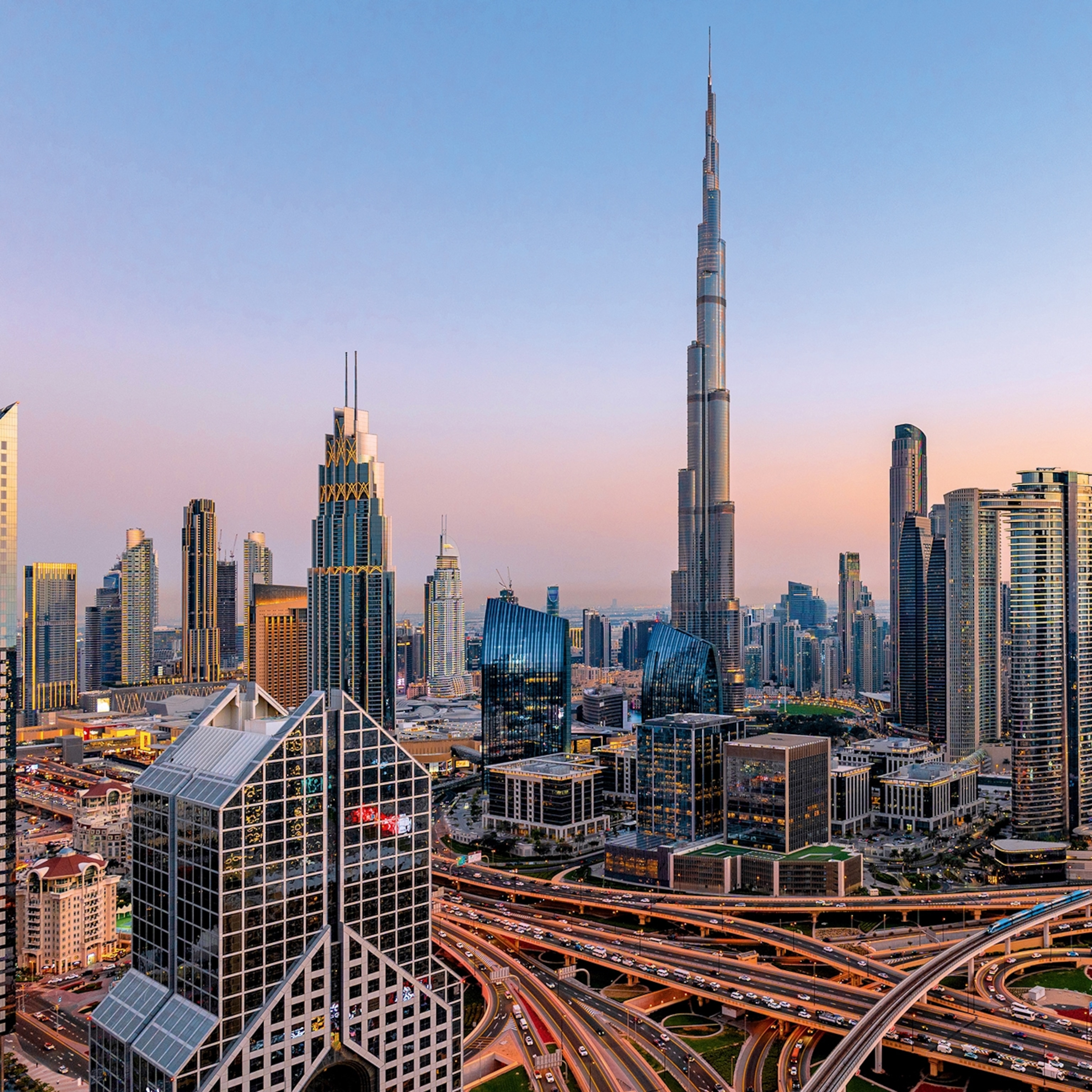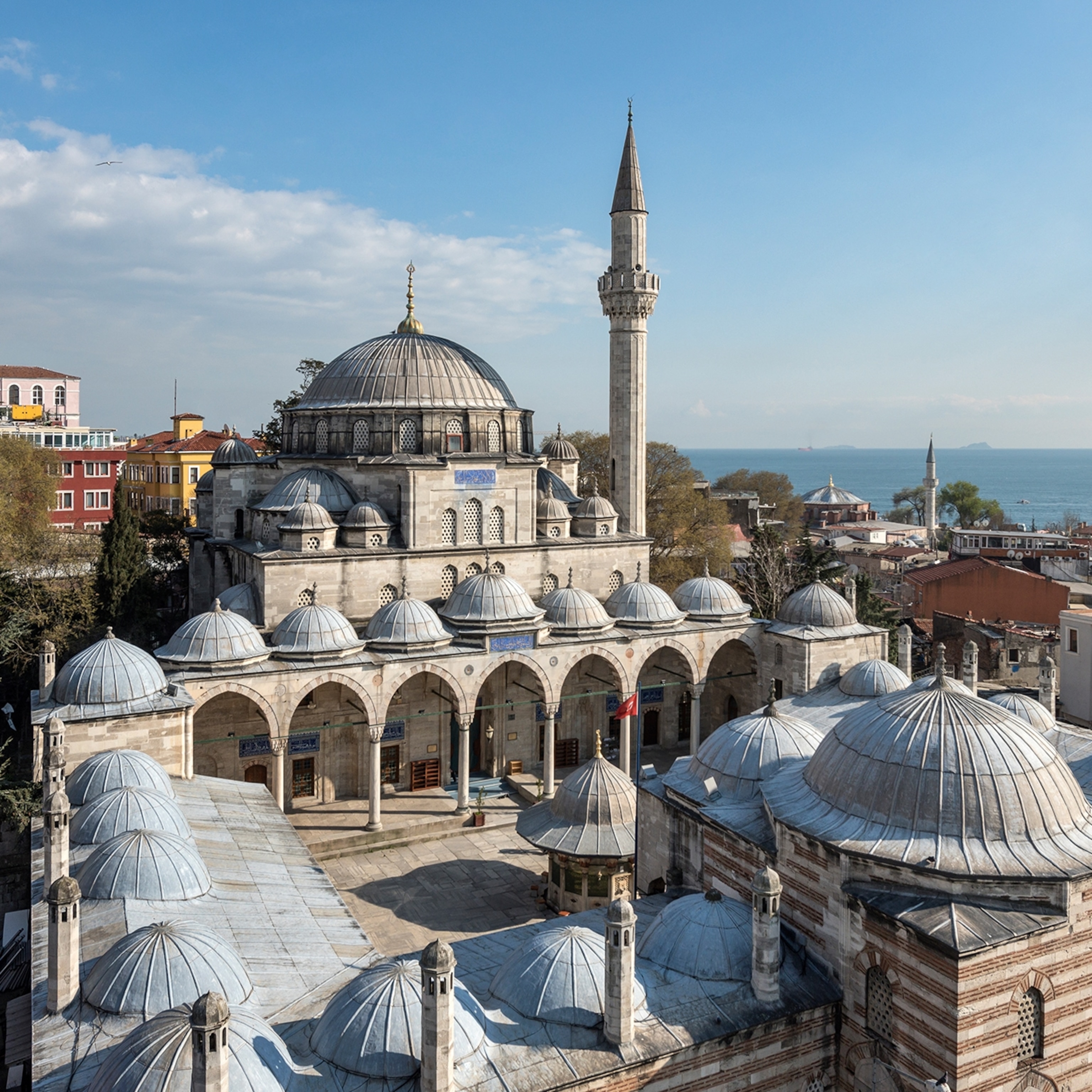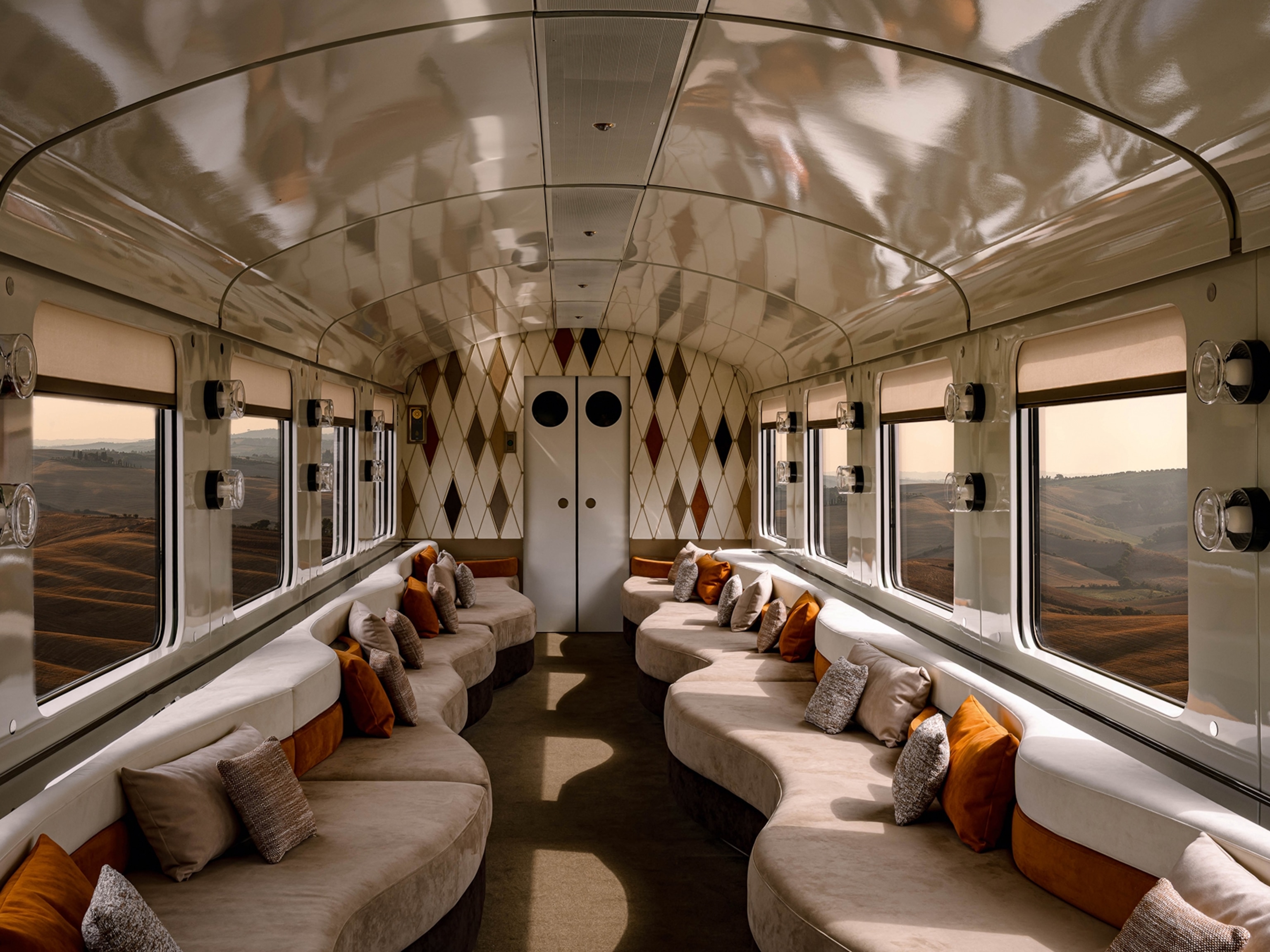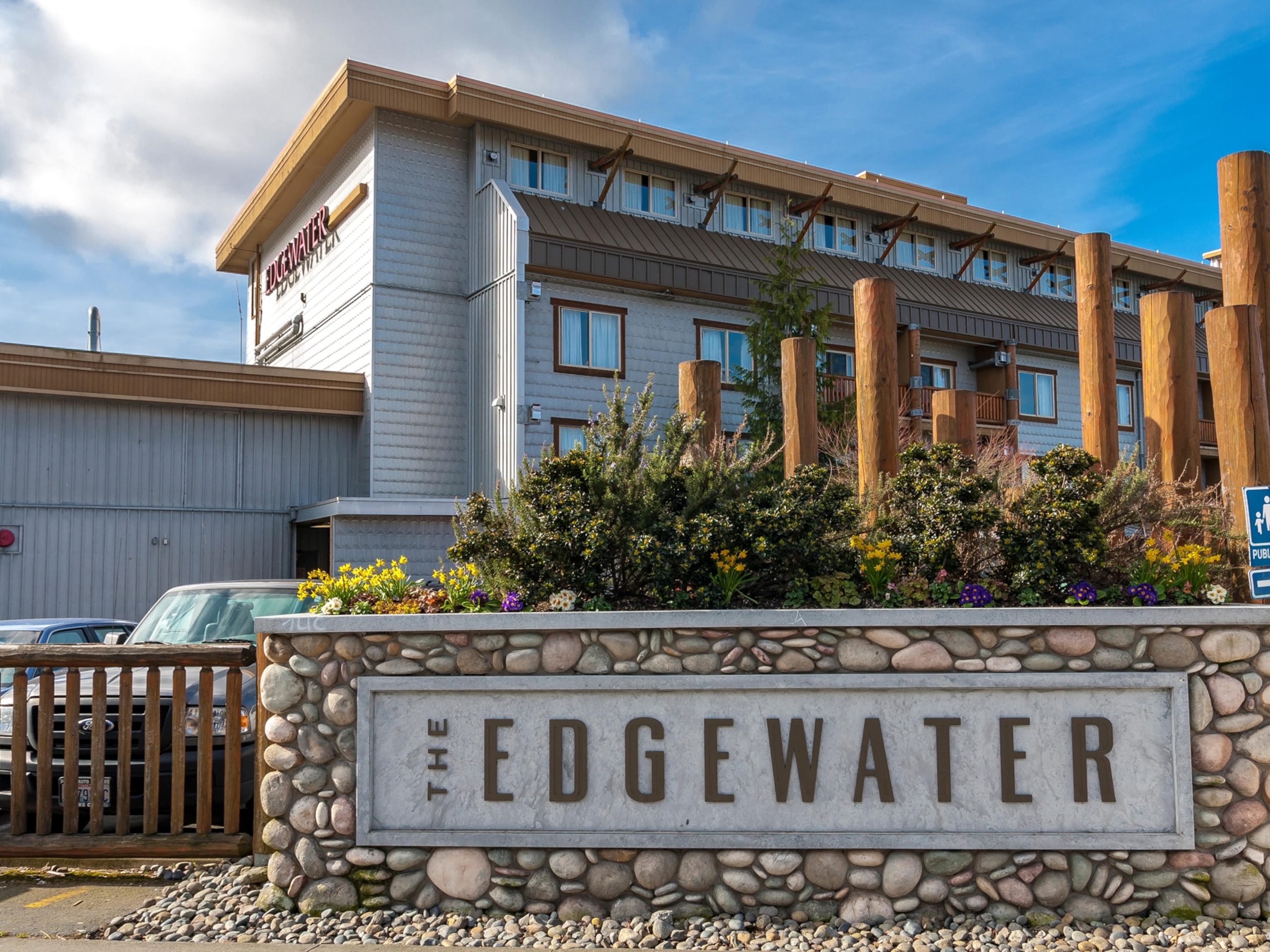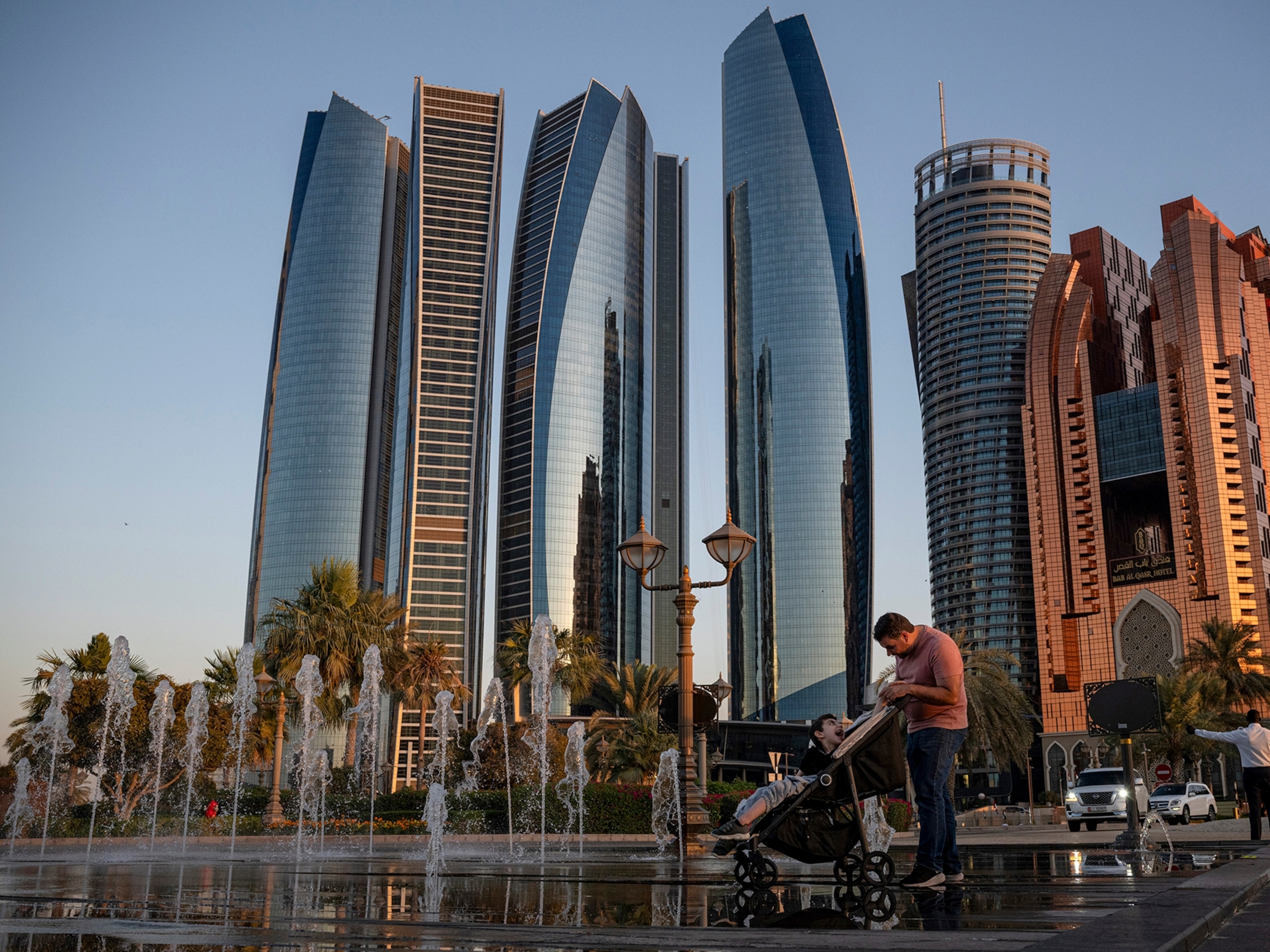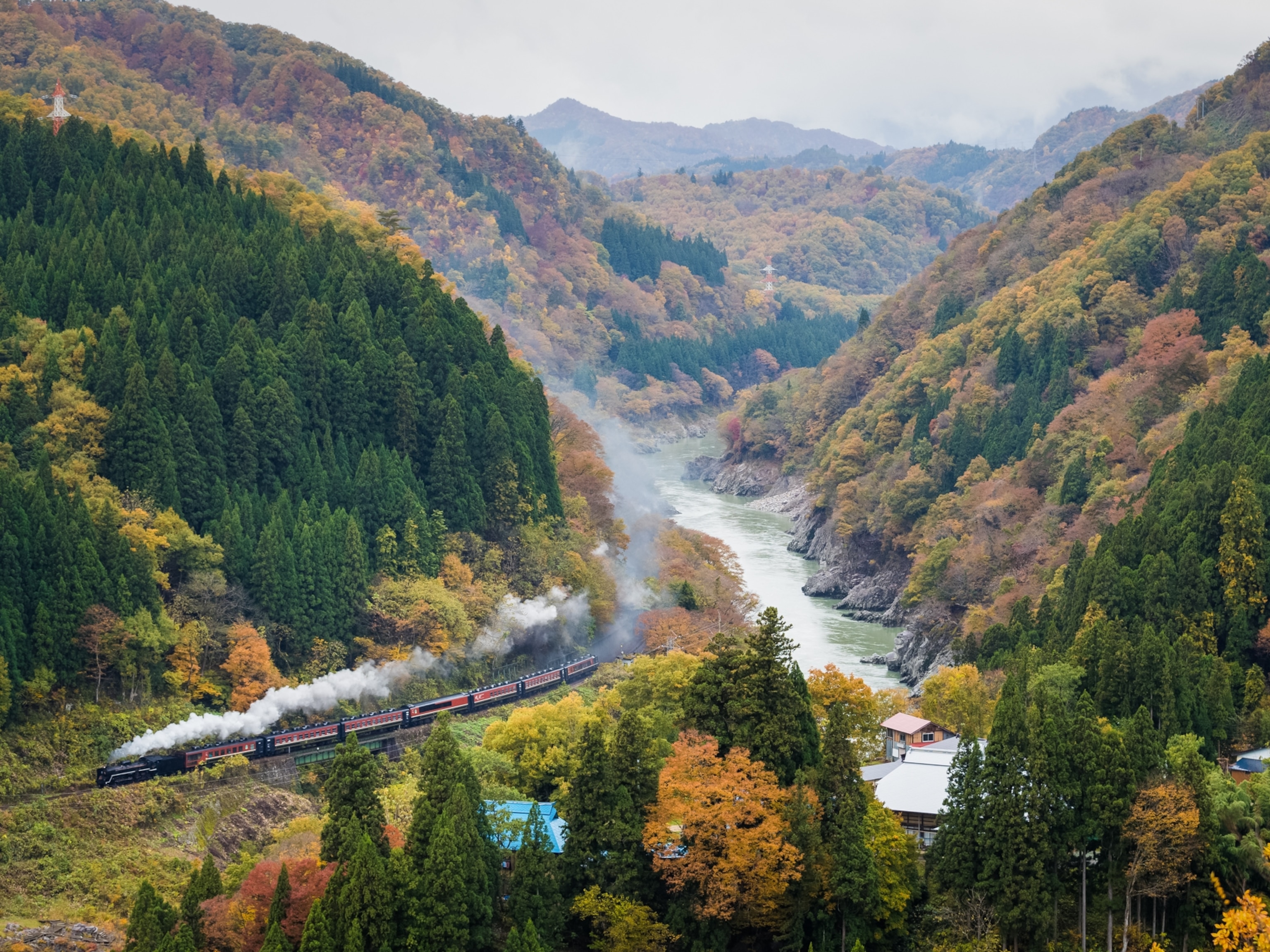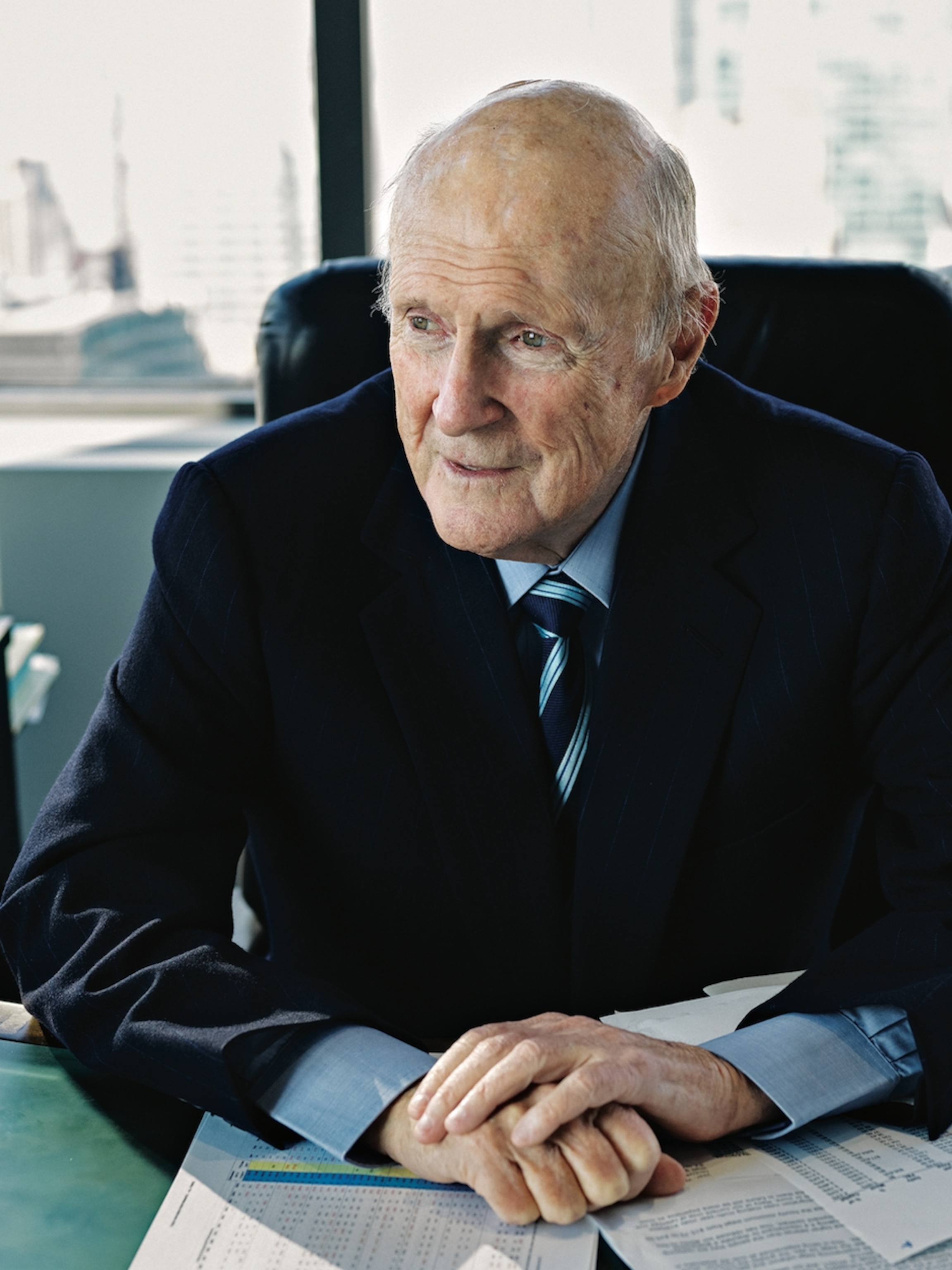
The Accidental Hotelier
New York hedge fund pioneer Julian Robertson Jr. never planned to own a suite of luxury lodges across the globe in New Zealand. But now, the 85-year-old billionaire can’t get enough of them.
JULIAN ROBERTSON JR. is sitting on a lemon chiffon-colored chair in his Park Avenue office. He is rattling around ice cubes in a tall glass tumbler filled with Cheerwine, a cherry-flavored soft drink. “I’m a geography nut,” says the legendary investor.
His comment is apt, as from this vantage point, 48 floors up, New York City’s geography and topography unfold expansively below. The buildings comprising Manhattan’s skyline look like toy Legos boxed in by the Hudson River.
From here, one can glance south to the Financial District, where Robertson made his name in the 1980s and 1990s by being the one of the best stock-pickers in town. During an 18-year run starting in 1980, when he founded Tiger Management—one of the first hedge funds, and one of the most successful ever—Robertson turned an initial $8.8 million investment from family and friends into nearly $22 billion, with an annual compound rate of return of 31.7 percent. He mostly exited the game in 2000 (after a series of setbacks, from choosing to stick with “value” stocks over the then high-flying dot-coms), and now, at age 85, the Giving Pledge signer with a reported net worth of $4.1 billion is focused on philanthropy through his Tiger Foundation.
Shifting to look southwest, to where the Hudson River flows by 14th Street, one can imagine the geography about 8,800 miles and nearly a day away, where an island country lies in the South Pacific Ocean, hosting Robertson’s other big business venture: He is, in fact, a hotelier with an expanding empire of New Zealand luxury hotels, Robertson Lodges, begun in 2001.
There hadn’t been a new property opening since 2010, but in fall 2017 Robertson unveiled the company’s fourth, Kauri Cove, a villa rental in northern New Zealand; it’s a 10-minute helicopter ride from Kauri Cliffs, his first lodge. And now, talking to me in a rare interview, Robertson says he’s not slowing down, but rather he’s exploring further hospitality opportunities at the world’s end.
JULIAN ROBERTSON JR. WAS BORN on June 25, 1932, in Salisbury, North Carolina, home of Cheerwine. The son of a textile executive, Robertson graduated from the University of North Carolina at Chapel Hill with a business administration degree in 1955 and went on to serve as an officer in the U.S. Navy until 1957.
He then moved to New York, where he worked as a stock-broker for Kidder, Peabody & Co., a now-defunct Wall Street securities firm. In 1978, he persuaded his wife, the late Josephine Robertson, to travel with him on a yearlong sabbatical to what he thought was the most ideal spot to take in geography: New Zealand, whose North Island’s central plateau is simmering with volcanic craters, hot springs and spouting geysers, and whose South Island is known for its Southern Alps and fiords. Traveling with the couple were their 4-year-old son Spencer Robertson and 1-year-old son Jay Robertson; their third son, Alex Robertson, came along not too long after the trip. The Robertsons fell in love with the country, particularly with Northland, on the northern tip of the North Island. When they came back to Manhattan, Julian started Tiger Management.
In the mid-1990s, a friend of Robertson’s called. “He’d dispatched his real estate person down to New Zealand,” he says. “My friend said, ‘Have you got any interest in real estate?’ I said, ‘Well, my wife and I loved Northland, and if you found some coastal property there, I’d be very interested.’ To make a long story short, he found such a property and I bought it.” Robertson decided to build a golf course on his 6,000 acres. His wife suggested they also construct a hotel because there would be nowhere for golfers to stay. “I said, ‘Ridiculous! If we build a good enough golf course, they will come regardless!’” Robertson says. “As in so many things, my wife was right. Lodges are a good way to make a buck. Golf courses have been a horrible way to make a buck.”
Kauri Cliffs golf course, designed by David Harman, opened in 2000, and its hotel, The Lodge at Kauri Cliffs, followed in 2001. It was the first luxury lodge to open in New Zealand since Irishman Alan Pye founded Huka Lodge in 1924, close to Taupo, a lakefront town near the North Island’s center. The Robertsons enjoyed running Kauri Cliffs so much that they purchased a second 6,000-acre plot in the Hawke’s Bay wine region near Napier on the North Island’s east coast. There they built Cape Kidnappers Golf Course in 2004 and opened The Farm at Cape Kidnappers a little over three years later.
I ask Robertson whether it’s true that after playing Bandon Dunes’ Pacific Dunes course, in Oregon, he knew he had to have the course’s architect, Tom Doak, design Cape Kidnappers course. Robertson smiles and demurs. “I played Bandon Dunes,” he says, “and we did get Tom Doak to design my course.”
Following Cape Kidnappers, Robertson turned his attention to the South Island, near Queenstown, where in 2010—three months after his wife died from a long battle with breast cancer—he opened Matakauri Lodge, an already-functioning hotel that he extensively renovated and placed under the Robertson Lodges umbrella. Now the company is getting into the villa-rental arena with the six-bedroom Kauri Cove in Northland. “It’s your own personal island—a good-sized island,” Robertson says. He won’t reveal what his next property will be—“The other place we have not closed on, so I don’t think I should mention it,” he says—but he confirms he’s looking into further opportunities.
Robertson’s son Jay, 40, worked at the lodges for 11 years, and ran them for about eight. He left in 2015 to move to Florida, and now Robertson’s youngest son, Alex, 38, is helping oversee the family business. I ask Alex to define the DNA of his father’s hospitality brand. “All the properties start with as pretty a piece of land as you can find in the world with a minimalist approach to the lodging that accentuates the natural beauty,” Alex says. “The glue is the high level of the service.”
SOME GUESTS THOUGHT Kauri Cliffs was too golf-oriented when it opened. “What I respect about Julian is that he’s learned from each project,” says Cari Gray, founder of Canada-based luxury tour operator Gray & Co. “Kauri Cliffs was very golf-centric, but Cape Kidnappers has a separation of hotel and golf so travelers could feel like they could go there and not be a golfer.”
Today fewer than 50 percent of Robertson’s visitors play the sport. “These hotels happen to have a world-class golf course, but they are not golf resorts,” Alex says.
In fact, Kauri Cliffs and Cape Kidnappers are also working farms. “For people who have never been to a farm, to see 500 or 700 sheep rounded up by two dogs with a whistle is pretty unreal,” Alex says. Meanwhile, Cape Kidnappers has a world-class kiwi bird sanctuary; Julian says going with a guide in search of one of the threatened birds native to New Zealand is “probably more unique than you even realize.” He adds, “I’d say only 10 or 15 percent of Kiwis—meaning New Zealanders—have ever seen a real kiwi in the wild.”
Former NBC news anchor Tom Brokaw, who has stayed at Cape Kidnappers, remembers going kiwi tracking. “Julian is a citizen of the world and that is best demonstrated by his investment in and affection for New Zealand,” Brokaw says. “Cape Kidnappers, his seaside resort, golf fantasy land, and kiwi habitat is one of those magical places you dream of but never really expect to visit. But I did and it exceeded all my enlarged expectations. And, as a bonus, I held a baby kiwi bird—and later caught the largest rainbow trout I’d ever hooked.”
Robertson put New Zealand on the high-end map by charging for high standards. “New Zealand lodges cost as much as the top African safari lodges,” Gray says. “That’s amazing for such a small island destination. Julian has never been shy of putting a big price tag on a great experience, and the world paid attention.” Gray notes that the spate of New Zealand luxury lodges that have opened in the last several years—including Helena Bay, a $50 million-plus, 800-acre Northland lodge developed by Russian billionaire Alexander Abramov that debuted in 2016—would never have had the vision or the price point without Robertson. “He has a global perspective,” she says.
Which brings us back to Robertson sitting in New York City, talking about the contrasts between being a New Zealand hotelier and an American financier. “I would say they are utterly different,” he says. “I think it’s good in both instances to surround yourself with good people whom you like and try to have a pleasant place in which to work. I think we’ve done that in both places.” In New Zealand, he has never felt any pressure against him because he’s an American real estate-developer. “As a matter of fact, the Kiwis have been extremely generous to me in every way,” he says. “They made me a knight.”
The conversation turns toward Robertson’s New Zealand-oriented philanthropic endeavors, ranging from his Aotearoa Foundation, which supports only New Zealand social causes, to his contribution of 15 works of art from his private collection valued at up to $150 million to the North Island’s Auckland Art Gallery in 2009. “When I die, a number of good paintings that I have will go in the Auckland museum,” he says. “It will be a meaningful factor to the New Zealanders because they love art and they don’t have these artists.”
Any kind of an ending seems long in the future. “We’re still learning about tourism,” Alex says. “You have a real expert here in finance and investing—my father has been doing it for 63 or 64 years—but he’s just 15 years into being a hotelier.”
THE LODGE AT KAURI CLIFFS

“Kauri Cliffs has more of my wife in it than any of the others,” Robertson says. “I think that’s why it’s so beautiful. It’s always been my favorite.”
Where: A 50-minute helicopter ride north of Auckland.
Accommodations: 22 suites in cozy, neutral-tone cottages. The one-bedroom standard suites have armchairs by the fire and east-facing balconies; the one-bedroom deluxe suites are elevated for sweeping views of the Pacific Ocean.
Don’t miss: Book a barbeque picnic on the pink beach. “Everyone goes to the pink beach,” Robertson says.
Price: From $1,200. (All properties can be booked at robertsonlodges.com.)
MATAKAURI LODGE
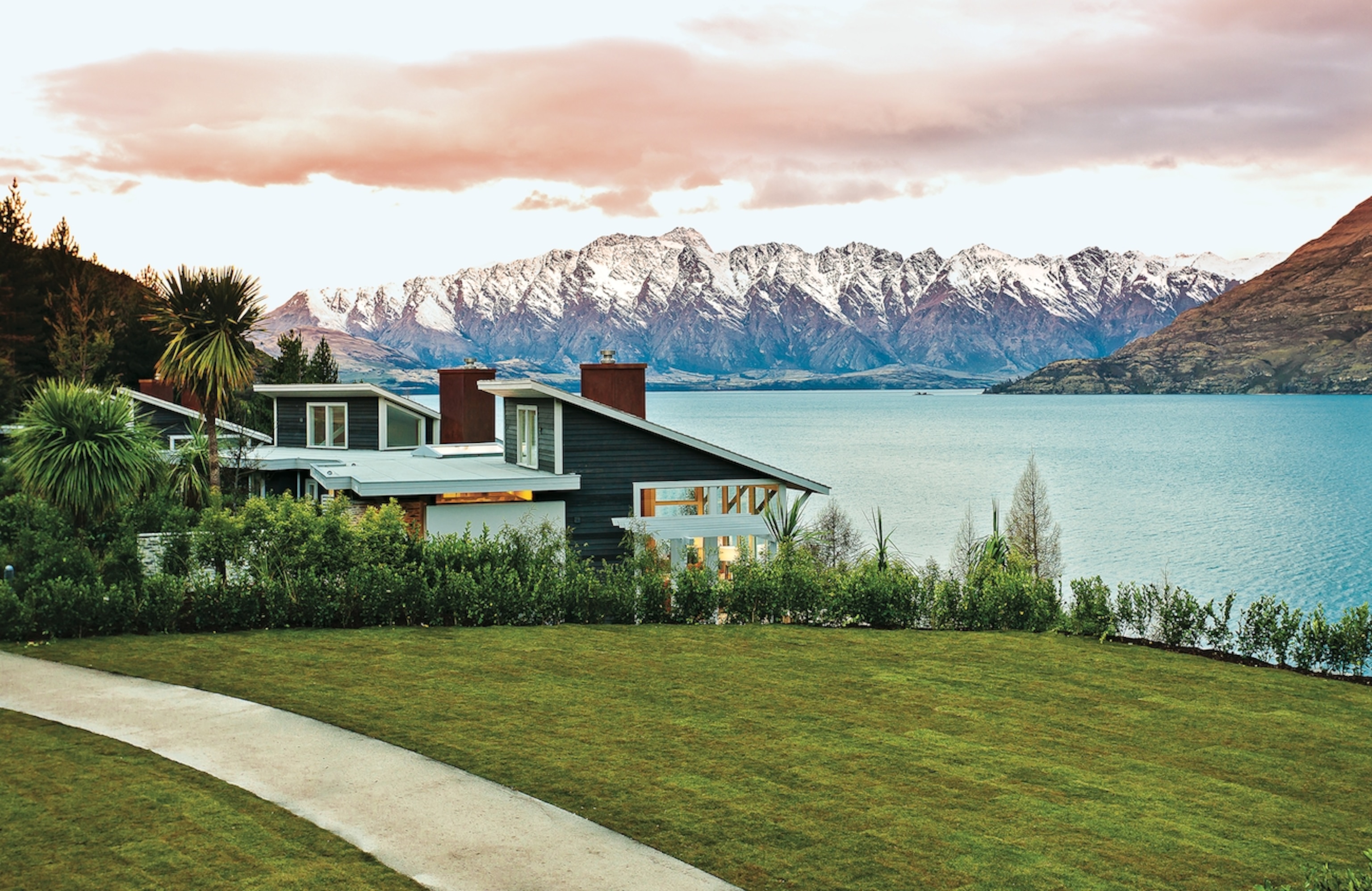
“I don’t really think there’s a whole lot about Matakauri that would remind you about Kauri Cliffs or Cape Kidnappers,” Robertson says.
Where: A seven-minute drive from Queenstown on the South Island.
Accommodations: The 12 suites and four-bedroom owner’s cottage overlook the blue-green Lake Wakatipu. As opposed to the country house feel of his other lodges, Matakauri has a sleek alpine ambiance. Book the owner’s cottage, which has an outdoor hot tub that looks out over the Southern Alps.
Don’t miss: Matakauri’s helicopter ride around the Milford Sound, including landing on both a 10,000-foot glacier and a beach at sea level—all within two hours.
Price: From $1,000.
THE FARM AT CAPE KIDNAPPERS
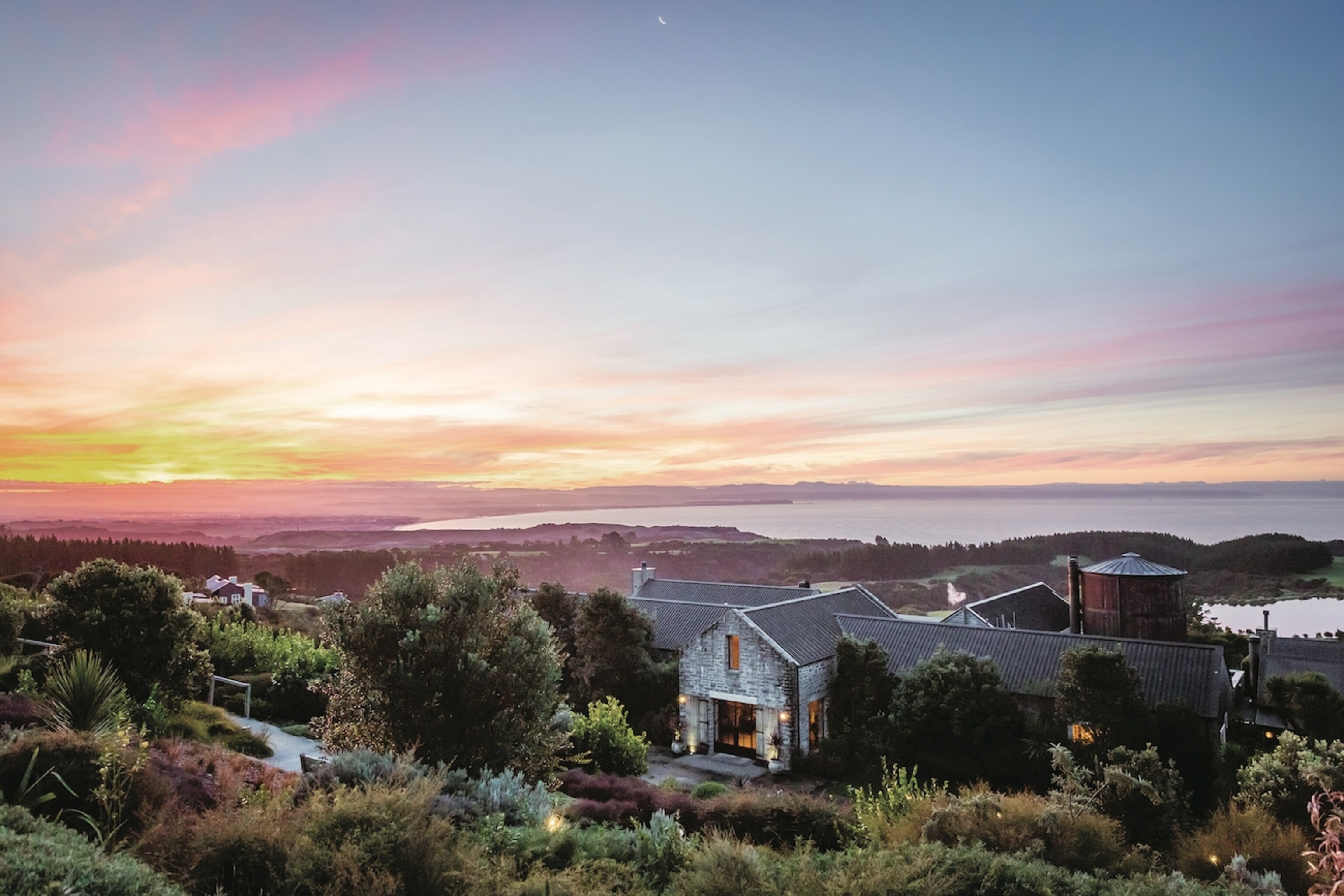
“Pictures do not do the land justice,” Robertson says of the green rolling ripples in the North Island earth that lead to a rugged cliff line that overlooks the Pacific Ocean.
- National Geographic Expeditions
Where: After an hour flight southeast from Auckland, the drive from the property’s gate up to the lodge takes 15 minutes on a windy road through ravines and gullies flanked by tall pine trees.
Accommodations:The 22 suites and a four-bedroom owner’s cottage are decorated with a farm feel, have pretty porches and the bathroom bathtubs have stunning views.
Don’t miss: From September to May, Cape Kidnappers is home to the world’s largest accessible mainland gannet bird hatching ground; make sure to take a Can-Am tour to see the colony.
Price: From $1,200.
KAURI COVE
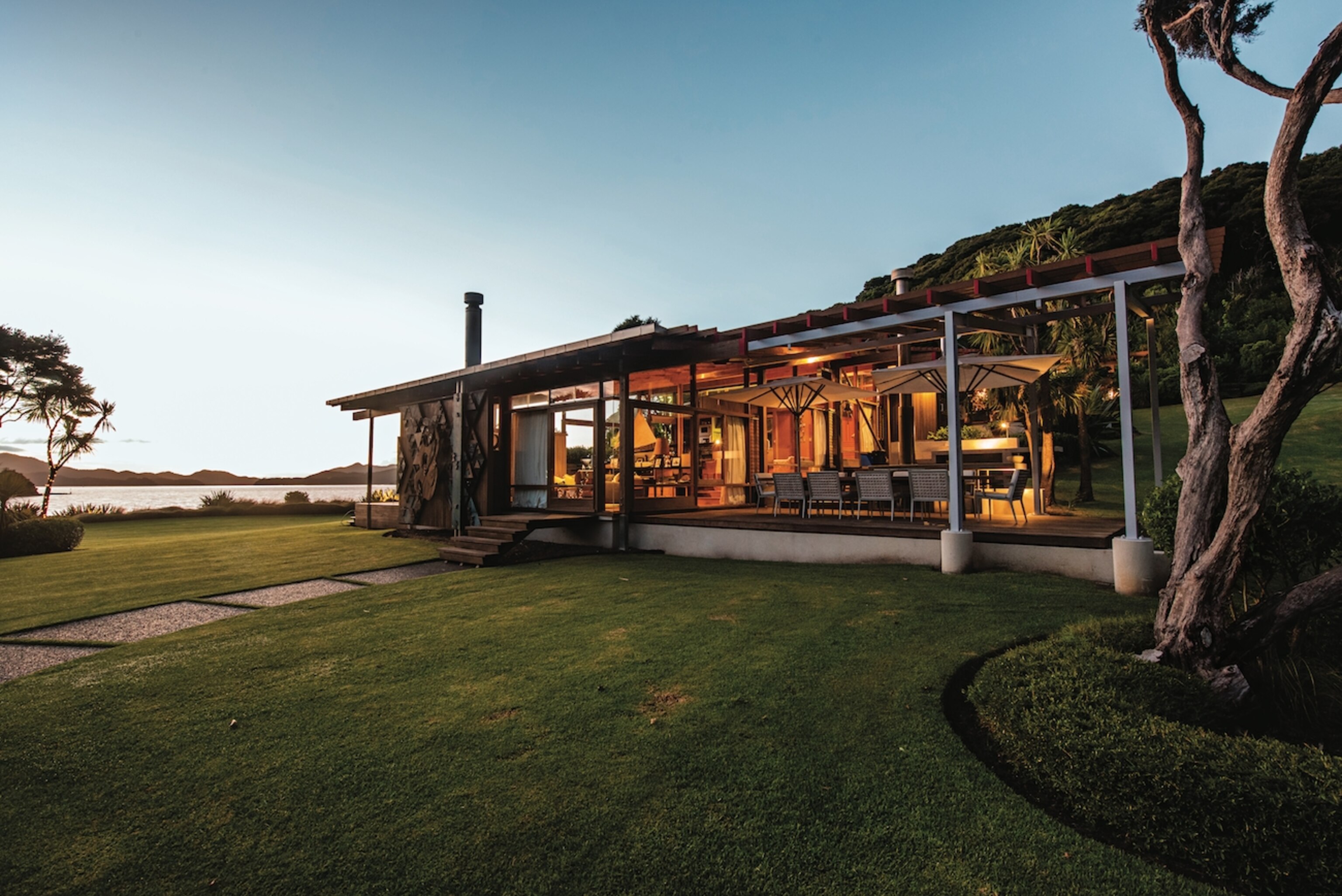
Julian Robertson Jr.’s newest retreat, Kauri Cove is a villa rental located on a private white-sand beach on Moturua Island in the Bay of Islands.
Where: A 50-minute helicopter ride from Auckland or a 10-minute helicopter ride from Kauri Cliffs, one of Robertson’s other lodges.
Accommodations: Designed by New Zealand architect Pete Bossley, the main residence has four bedrooms and a two-bedroom guest house. The property comes with a chef and an island caretaker-concierge.
“It has every kind of aquatic toy to play with,” Robertson says of the motor boat, sailing yacht, paddle boarding, kayaking, snorkeling, fishing and more on offer.
Don’t miss: The hiking trails around the island, Maori archaeological sites and bird watching.
Price: $18,000 per night, minimum three nights.
